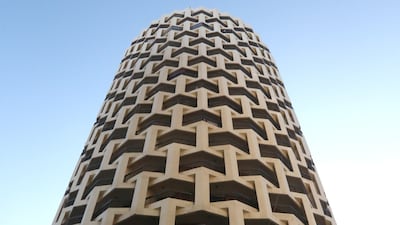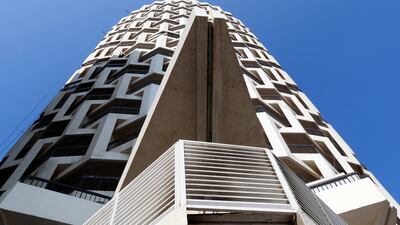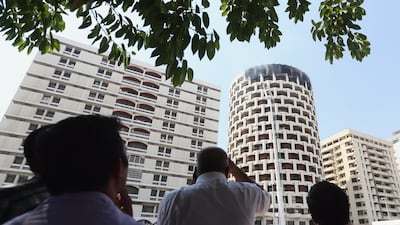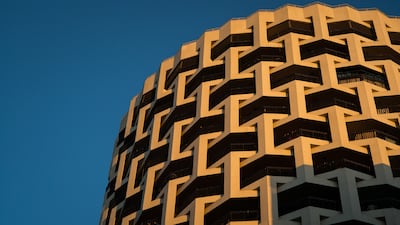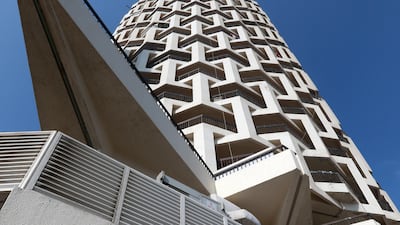Farouk El Gohary, an Egyptian Modernist architect and former head of the urban planning department at Ain Shams University, has died aged 83.
The professor died on November 16, 2020, in Cairo, leaving behind a legacy of works that includes one of Abu Dhabi's most recognisable structures.
Throughout his career as an architecture professor, which spanned more than 50 years, he influenced thousands of students, teaching at the second oldest engineering school in Egypt as well as other educational institutions.
His eclectic work demonstrated a fusion of various styles, often extending beyond Modernism and post-Modernism.
His projects, from large-scale designs for governments to renovation schemes for modern heritage buildings, allowed him to experiment with his architectural ideologies, testing and examining assorted forms, materials and technologies.
One of his most successful experiments was the Metabolist facade of a 1986 residential building on Gameat al Dewal al Arabiya Street in Cairo's Al Mohandiseen district, with an elevation of interlocking modules forming weaved concrete forms.
El Gohary went on to execute the same complex facade in a more compound building form in Abu Dhabi. His cylindrical design for the 16-floor Al Ibrahimi building on Electra Street continues to be one of the most renowned structures he designed, as well as his greatest imprint on the UAE’s capital.
El Gohary was also known for integrating Egyptian heritage and historical references with post-Modern and contemporary design and technologies.
In his design of the Ministry of Finance and Egyptian Tax Authority in Cairo, a complex group of connected blocks was supplemented with an intricate, multicoloured facade generated from the abstracted pharaonic hieroglyphs signifying the word for money.
El Gohary adopted similar applications in his designs for the Luxor and Aswan airports, where he incorporated Pharaonic symbols into both the facade and the interiors.
His interiors usually embraced colourful palettes, often accompanied by murals. While working as technical advisor at the National Authority for Tunnels, he commissioned Egyptian artist Sami Rafi to design and paint ceramic murals for 19 Cairo Metro underground stations.
His direction appears to have stemmed from his childhood passion for fine arts, a skill that he preserved and cultivated throughout his professional career, producing hand sketches of his building proposals.
Born on October 31, 1937, in the city of Samannoud, in northern Egypt's Gharbia Governorate, El Gohary moved to study architectural engineering at Cairo University.
After graduating in 1959, he began his career in the design office of architect Ali Labib Gabr, a pioneer who served as the first Egyptian dean of the School of Architecture of King Fuad I University, now Cairo University.
During his time at Gabr’s office, El Gohary worked on projects such as El Amiriya Press in Imbaba and Luxor's New Winter Palace Hotel in 1960.
A year later, he moved to the UK where he earned a master’s degree in architecture from the University of Liverpool in 1963 and a PhD from University College London in 1966. During his time in the UK, El Gohary trained at a number of London firms, including the offices of Maxwell Fry, Llewelyn Davies and Basil Spence.
After returning to Cairo, he was appointed as a teacher at the faculty of engineering at Ain Shams University in 1966. He also established his own practice, Elgohary Architects, in Cairo in 1968 which he managed with his late son, Amr.
Between 1992 and 1993, he chaired the urban design and urban planning department at Ain Shams, where he continued to teach until his appointment as professor emeritus in 2012.
Both his daughter, Germin, and son, Amr, taught architecture and urban planning at Ain Shams University. On December 27, one month after El Gohary's death, Amr died after contracting Covid-19.
El Gohary is known for his opposing views to Hassan Fathy’s architectural philosophy. While Fathy adopted a traditional and cost-effective technique, El Gohary regarded architecture as a high-end form of art. He rejected the idea of reproducing traditional styles, believing architecture development should always include novel elements and ideas.


